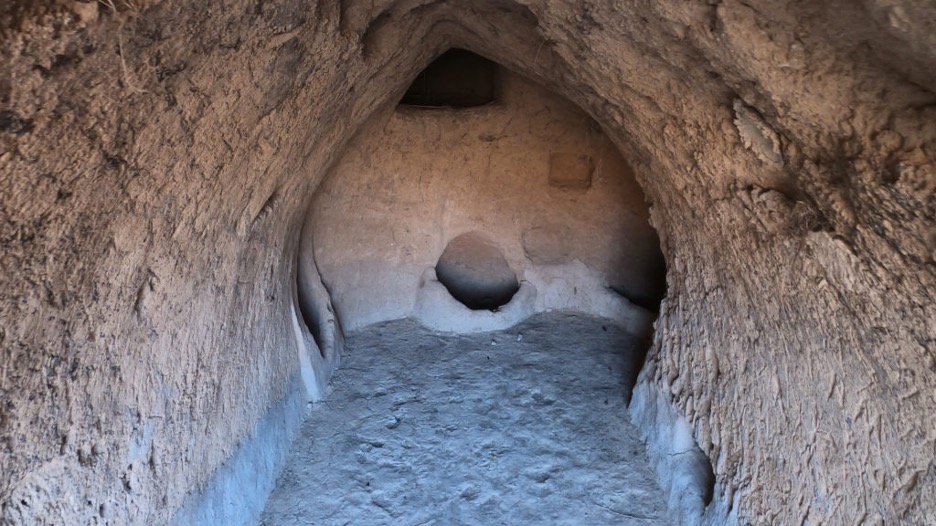The article “Qorihona – Mysterious Zoroastrian temple near Almalyk” (in modern-day Uzbekistan) was originally published in the We Travel Guides venue on January 5, 2021, however the link for this is no longer operational (see here …; see also We Travel Guides in Facebook).
The author(s) refer to the temple as Zoroastrian but note that the followers being alluded to in her article printed below were followers of the Manichean sect – for more on this topic see:
For more on the ties between Asia (notably Central Asia) and Greater Iran see:
Kindly note that the captions for the images written below do not appear in the original We Travel Guides posting. In addition, there is a map and accompanying caption that does not appear in the original We Travel Guides posting. Finally, the version printed below has been slightly edited from its original We Travel Guides posting.
======================================================================================
Qorihona is the mysterious Zoroastrian temple with 2000 year`s history, which is located in remote mountainous area near to the Uzbekistan-Tajikistan border, 26kilometer away from industrial city of Almalyk, on the route to Kouldi goldmining. There is no clear and verified information about this mysterious place, only some theories. Till 2016, entering the perimeters of Qorihona was prohibited by Uzbekistan government for unknown reasons. Even, after lifting the restrictions, still only few people visit there. So this episode, which is created by Uzbek Tales team is the very first and only exclusive video about Qorihona on the web.
Qorihona-Mysterious Underground Temple of Zoroastrians/Корихона-Загадочный Зороастрийский Храм (Source: Uzbek Takes in YouTube).
The Seven Deadly Sins
The underground temple of Qorihona near the industrial city of Almalyk in the Tashkent region is one of the unsolved mysteries in the history of Uzbekistan. Lost among the arid foothills of the Qurama ridge, it was first scientifically described in1934 by the famous Soviet archaeologist, academician Mikhail Masson. According to scientist, in different historical periods, this unusual place could have been a pagan temple, a castle of medieval rulers and a Muslim mosque. A sloping mound22 meters high, hides a whole labyrinth of halls and passages with a total area of60x48 meters. The labyrinth occupies two tiers, interconnected by narrow manholes with clay steps. The dome of the central hall, which had settled down from time to time, was previously supported by wood beams. Radial galleries with deep niches, reminiscent of monastic cells, diverge from it in different directions. There were not many materials, so archaeologists and historians have not come to consensus about the original purpose of these mysterious premises. However, they managed to give a number of interesting hypotheses on this subject.
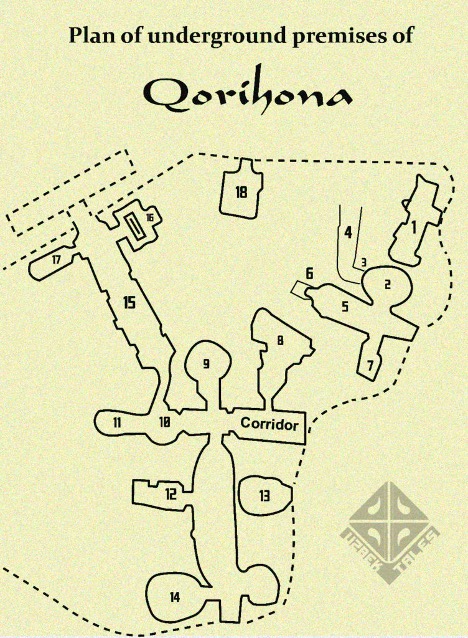
The underground plan of the Qorihona underground premises as drafted by the Uzbek-Tales team (Source: We Travel Guides – see here …; see also We Travel Guides in Facebook).
In particular, Masson suggested that Qorihona’s underground cells, located far enough from residential areas, could well serve as a secret refugee point for members of sects and cults banned in Islam. These, for example, included the followers of the Iranian preacher Mani. Manichaeism, which originated among the Christian Gnostics of Mesopotamia in the 1st millennium AD, already in the early Middle Ages spread from Western Europe till the Gobi Desert. For a short time it was even the state religion of the Uyghur Khaganate.
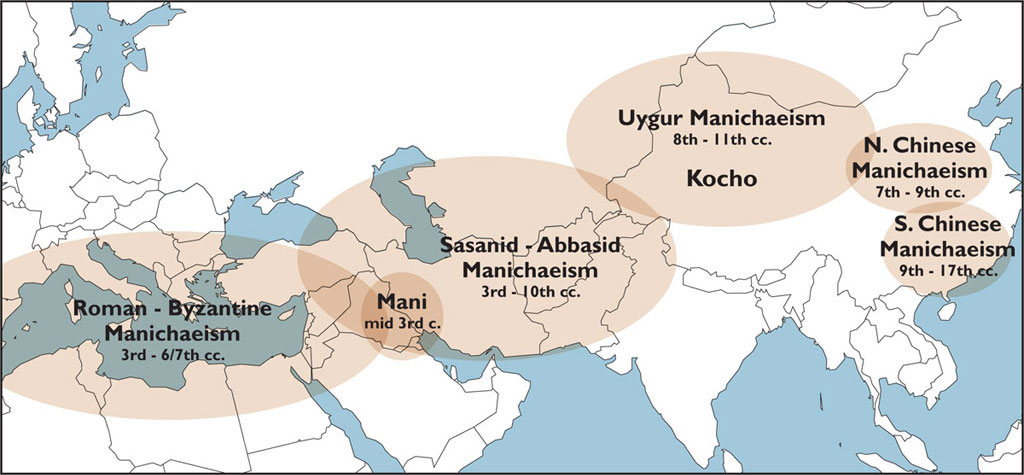
Map detailing the spread of Manicheaism (Source: Voice of America) … for more see here …
Manichean views on creation and the structure of the world were quite different from the ideas of world religions. For this reason, in medieval Europe, Mani’s followers were severely persecuted by the Christian Inquisition and secular authorities. In Central Asia, which since the 8th century fell under the rule of Islamic caliphate, the Manichaeans were also considered as evil atheists and were given over to public executions. Their teaching was that the soul created by God must be cleansed from temptations, delusions and sin. However, along with the asceticism traditional for the East, the Manicheans were also credited with a very extraordinary demeanor and methods that none of the religions of that time could approve, except, perhaps, Tantrism, maybe. In particular, it was believed that the Manicheans allowed gluttony, drunkenness and adultery – so that, having passed through them, a person would acquire an aversion to everything carnal.
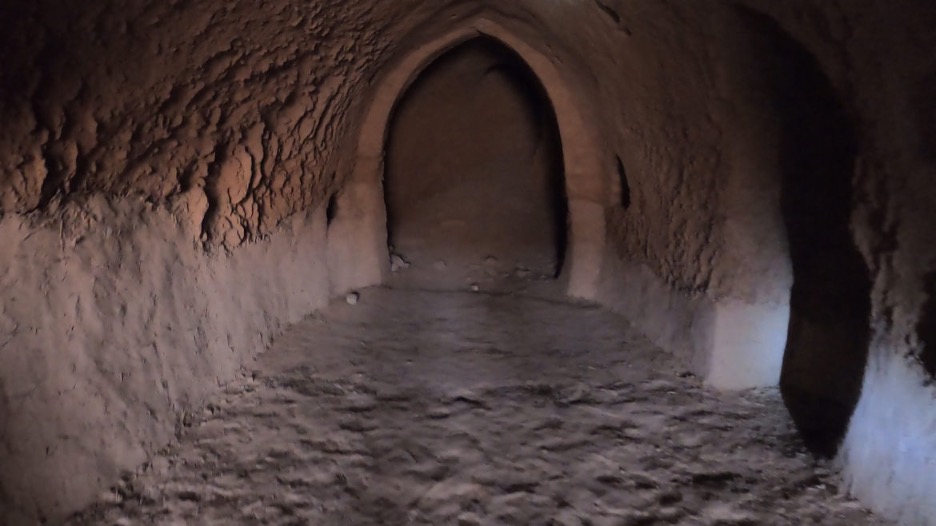
Arched ingress in the interior of the underground temple of Qorihona (Source: We Travel Guides – see here …; see also We Travel Guides in Facebook).
It is very possible that such customs were only attributed to the Manicheans by representatives of the orthodox clergy in order to arouse the disgust of believers towards them. However, the historian Lev Gumilev believes that the only precedent in history of the adoption of Manichaeism as a state religion was no coincidence that aroused the irreconcilable hatred of neighboring states towards the Uighur Kaganate. Among them, in particular, were Confucian China, as well as the Turkic and Mongol tribes who practiced shamanism and Nestorian Christianity. In the end, the Kaganate, undermined from within by moral decay and the disintegration of traditional foundations, was completely destroyed as a result of the military campaigns of its neighbors. In Muslim countries, the Manicheans, called Zindiks, could only practice their faith in the deepest secrecy.
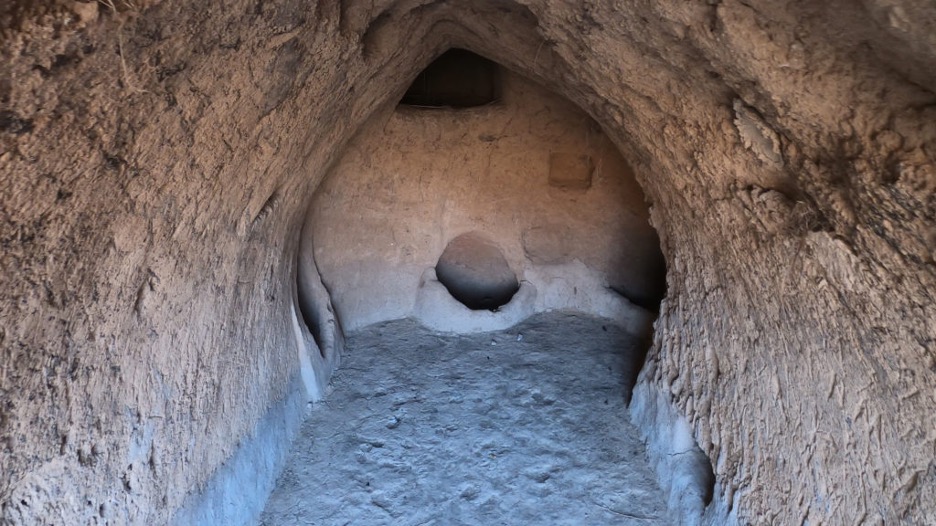
Possible worship venue in the interior of the underground temple of Qorihona (Source: We Travel Guides – see here …; see also We Travel Guides in Facebook).
Summer Residence of the Ruler
In 1992, local archaeologist from Almalyk, Oleg Rostovtsev, discovered newartefacts in Qorihona, dated to the middle of the 1st millennium AD. He believed that at this place there first existed a Zoroastrian temple, and later the summer residence of the rulers of Ilak, a Turkic state closely associated with the ancient oasis of Chach (Tashkent), was located. The capital of the Ilak state, called Tunket, was discovered by archaeologists 6 kilometers north of Qorihona at the site of the modern village of Sarjailak. In Ilak kingdom in the IV-XII centuries, before the invasion of the ruthless Genghis Khan, there were many settlements. Iron was mined there, metals were smelted, there was lively trade along the caravan routes, and their own coins were minted.
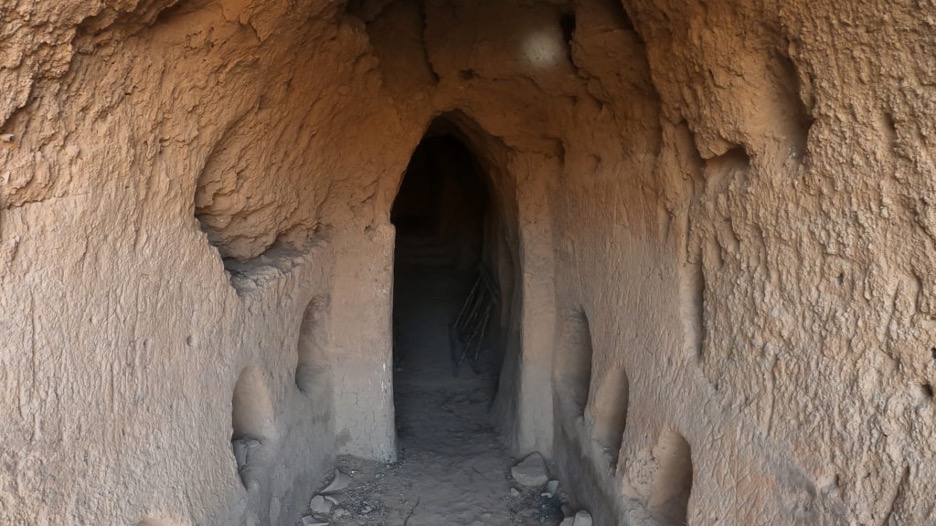
Hallway and portal in the interior of the underground temple of Qorihona (Source: We Travel Guides – see here …; see also We Travel Guides in Facebook). Note the niches in walls – these may have been placed with candles or icons.
Qorihona’s ambiguous fame could have arisen in later times. The rulers of Ilak in the summer moved their residence to healthier and cooler places. However, after the Mongol invasion, their castle could turn into ruins. Constructed from “pakhsa”- unbaked clay blocks – the contours of the castle have been erased under the influence of time, just as the Zoroastrian temple had previously disappeared without a trace under their foundation. However, inside the formed mound, where rain and wind did not penetrate, a completely habitable dungeon was preserved. There “dervishes” – wandering monks of the Muslim Middle Ages – found shelter there. Later, the ambiguous reputation of the ancient sanctuary was completely rehabilitated by the activities of Muslim ascetics.
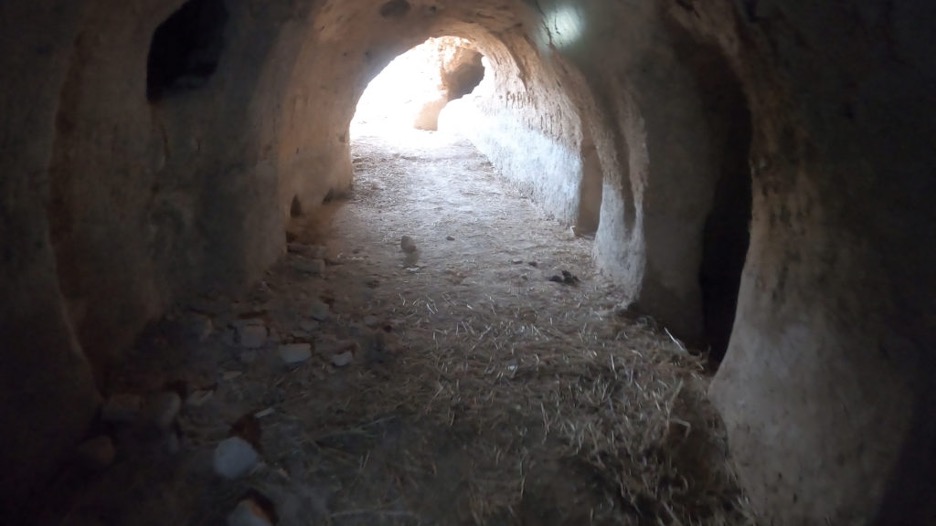
Egress out of the underground temple of Qorihona (Source: We Travel Guides – see here …; see also We Travel Guides in Facebook).
Legacy of the Sufi Order
In the 19th century, the Qorihona mound was finally adapted for the needs of pilgrims by the leader of the local Sufi order Naqshbandiyya Ishmuhammad, famous for his righteous life. The underground rooms, where it is warm in winter and cool in summer even at +50 C, are perfect for observing the Sufi ritual of “chilla”. This forty-day fast of purification is to be performed in complete solitude. All the time of fasting, usually combined with the hottest period of the year, the novice avoids communication even with his like-minded people, spending day sand nights in prayer and meditation. Meager food, consisting of bread and water, is left for him at the entrance. Similar rituals have survived to this day in many parts of Central Asia and Iran, primarily where they are not disturbed by overly curious people. Some local residents said till now Sufis continue to use underground galleries for performing ancient ritual of “chilla”. Nevertheless, the monument itself is kept in a satisfactory condition and is constantly open to pilgrims who come here by road from the city of Almalyk to the Kauldi mining.

